I don't know about any of the other PolarTREC teachers, but meeting "my" science team for the first time was preceded by mild nervousness. I have been in email contact with them and have even talked to them on the phone, but still, being the lone middle school teacher riding up the elevator to the 9th floor of the 14 story Atmospheric and Space Science Building at the University of Wisconsin- Madison and then stepping into the middle of a group of research scientists is initially a bit intimidating.
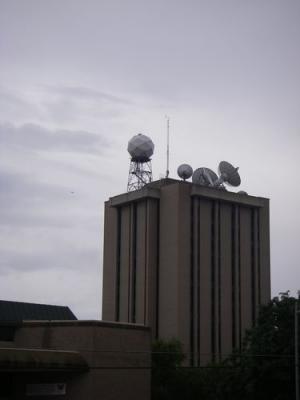
Their building looms ahead as I approach.

It sems endless as I stare skyward.
What do I wear? What do I say? Will they like me? Will I like them? It's kind of like going out on a blind date? But unlike the few blind dates that I have had, all went smoothly. It didn't take long and we were visiting comfortably- and no they don't bite. Scientists of course are people to, some ride bikes to work, have husbands, wives, kids and parents just like everyone else. Shelley, George, Jonathan, Jonas and Linda (Matthew was out of town) quickly took me under their wings, but treated me as an equal at the same time. You can read more about them by clicking on their pictures at the following AWS website.
We toured their offices, looked at some of the actual weather stations which they have deployed in Antarctica.
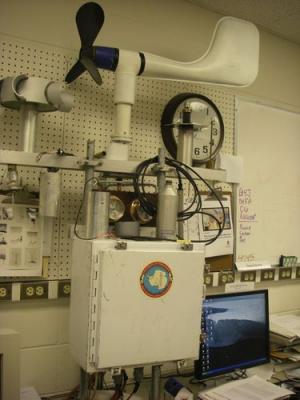
Antarctic Automated Weather Station in Shelley's Office
George and Chuck (who has semi-retired and who I met later at dinner) designed and built the original stations which they deployed in 1980, some of those originals are still in operation. At dinner Chuck talked about his first short visit to Antarctica. By the time the plane had landed in McMurdo he had developed an infection, the Dr. sent him immediately back to New Zealand where he ended up in the hospital. Fortunately the rest of his team was able to carry on the research project.
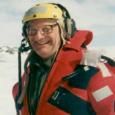
Dr. Chuck Stearns
The team showed me the automated weather stations which they have placed at locations around the incredibly remote and hostile southern continent.
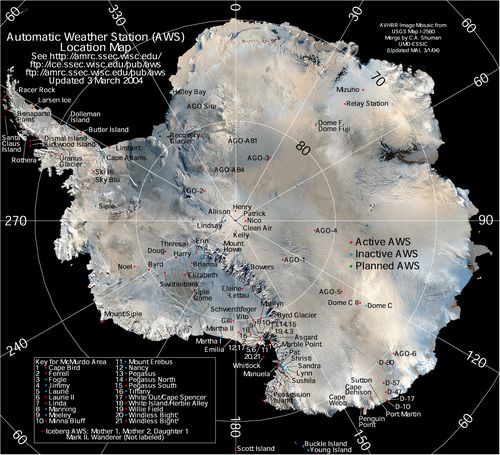
George, Shelley and Jonathan explained to me the basics of how they work. Amazingly powered by solar panels and batteries and transmit 256 bites of weather data every 10 minutes, 24 hours a day, 365 days a year- assuming everything goes according to plan. The data is transmitted to NOAA satellites and then back to computers on Earth. Shelley and I spent a large amount of time discussing what the team does and the logistics of going to Antarctica- things like making sure I take an alarm clock.
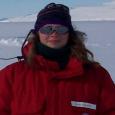

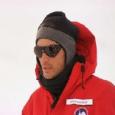
Shelley Knuth George Weidner Jonathan Thum
Jonas showed me some of the work he is doing with the AWS website.

Jonas Asuma
Linda spends much of her time going through each piece of data checking for accuracy.

Linda Keller
She explained to me that the weather data she and the rest of the team produce is essential for forecasters predicting weather conditions for the people who work in Antarctica. The data is also used by many scientists for specific research projects. This information is available as well to you, the general public, on their website. It can be viewed in different formats, including raw numbers, graphs, and plotted on maps. You can access this data at their website.
Here are a couple of questions about today's visible light satellite image of Antarctica.
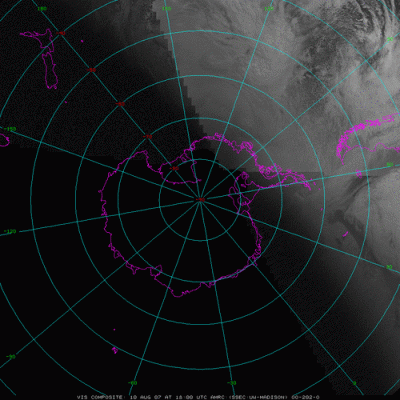
Aug 10, 2007 1800 UTC time
Visible Light Composite Satellite Image of Antarctica
Who knows what UTC time is?
Where the lines of longitude join in the center is the South Pole. Why do you only see clouds on the right side, and none the left side of the image?
My short trip to Wisconsin was just a day and a half long but I left with much better picture of this team of meteorologists. I know who I will be working with, what they do and what I will be doing, and no, meteorologists don't study meteors, they study the weather.

